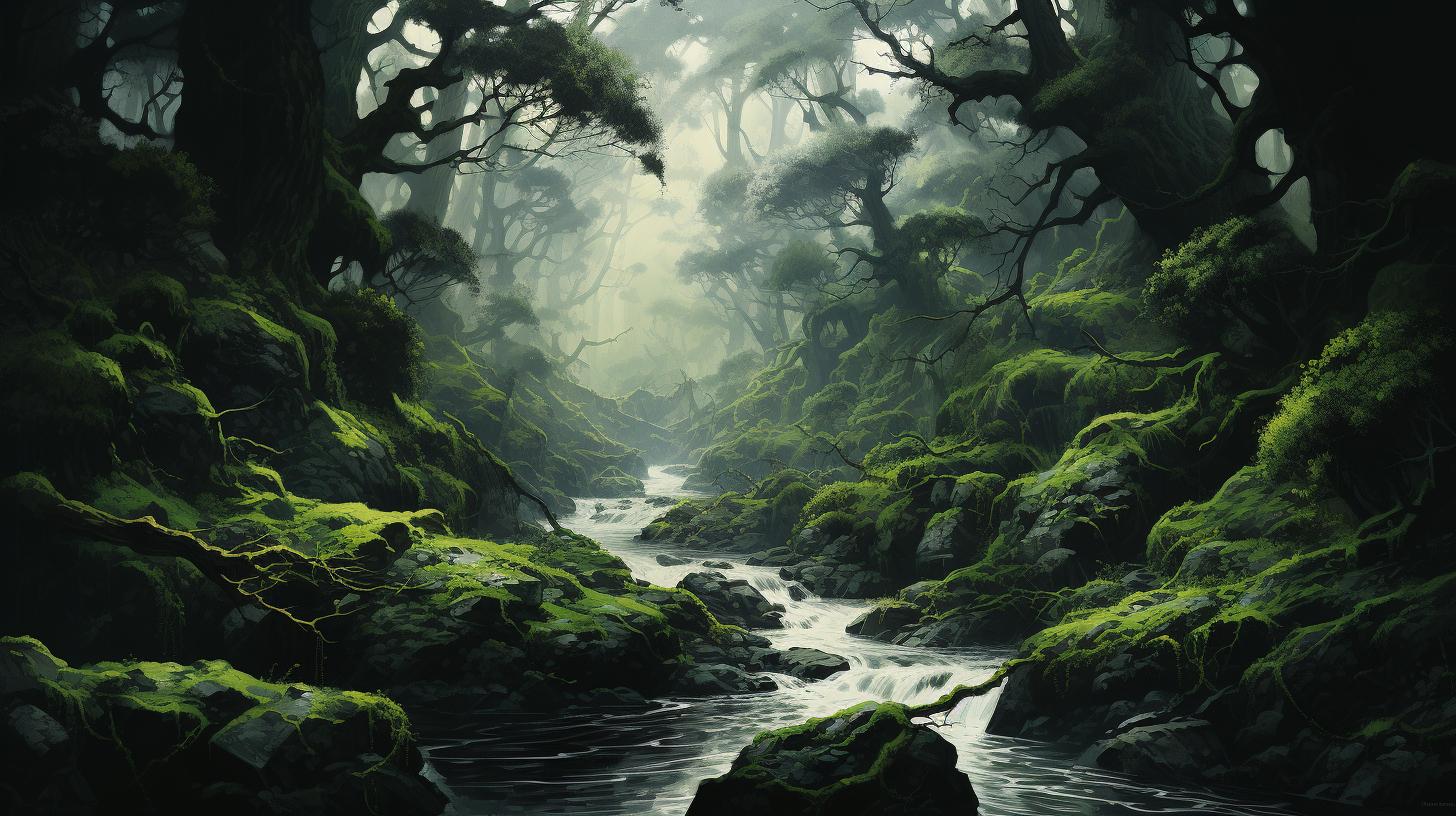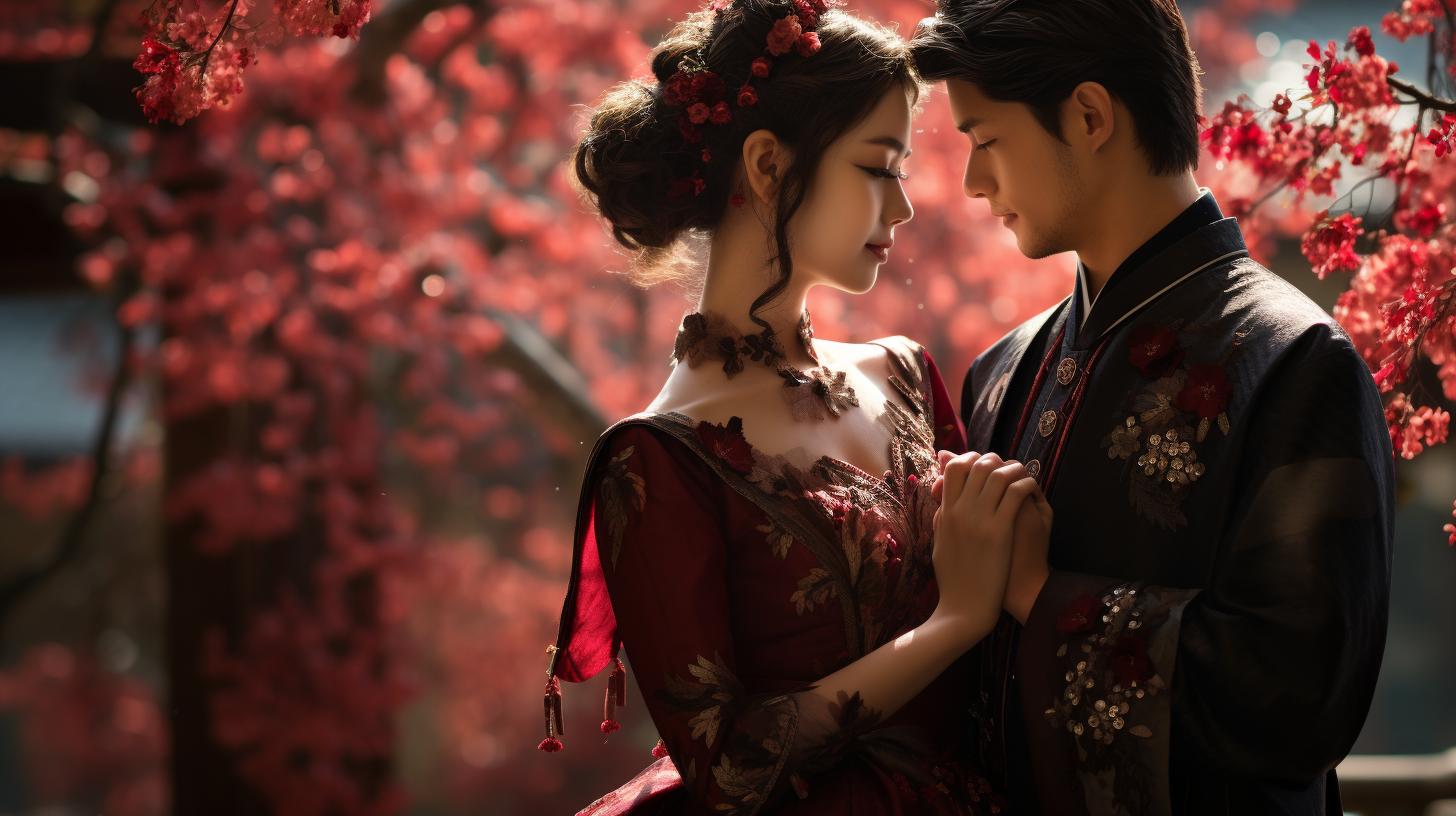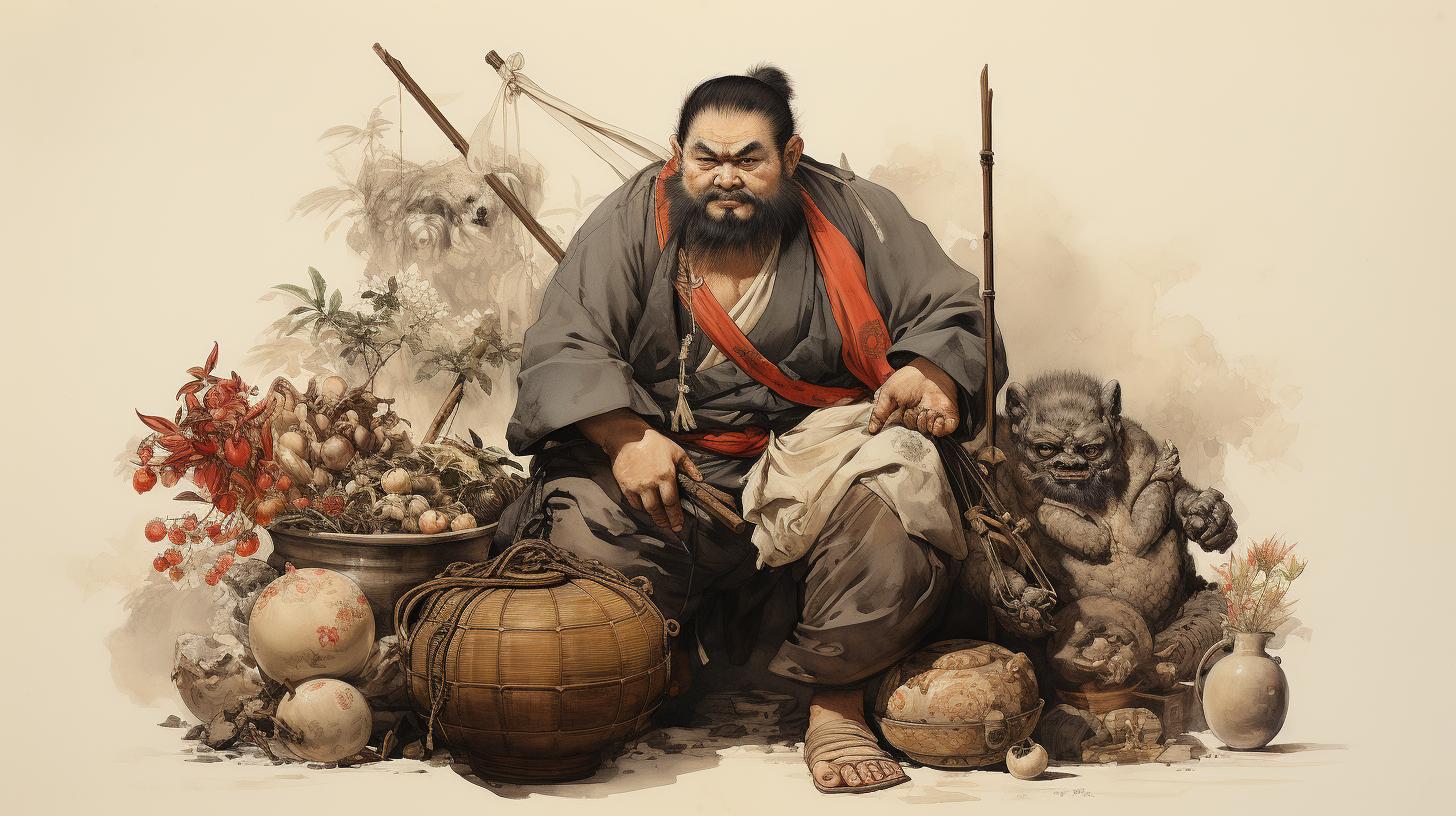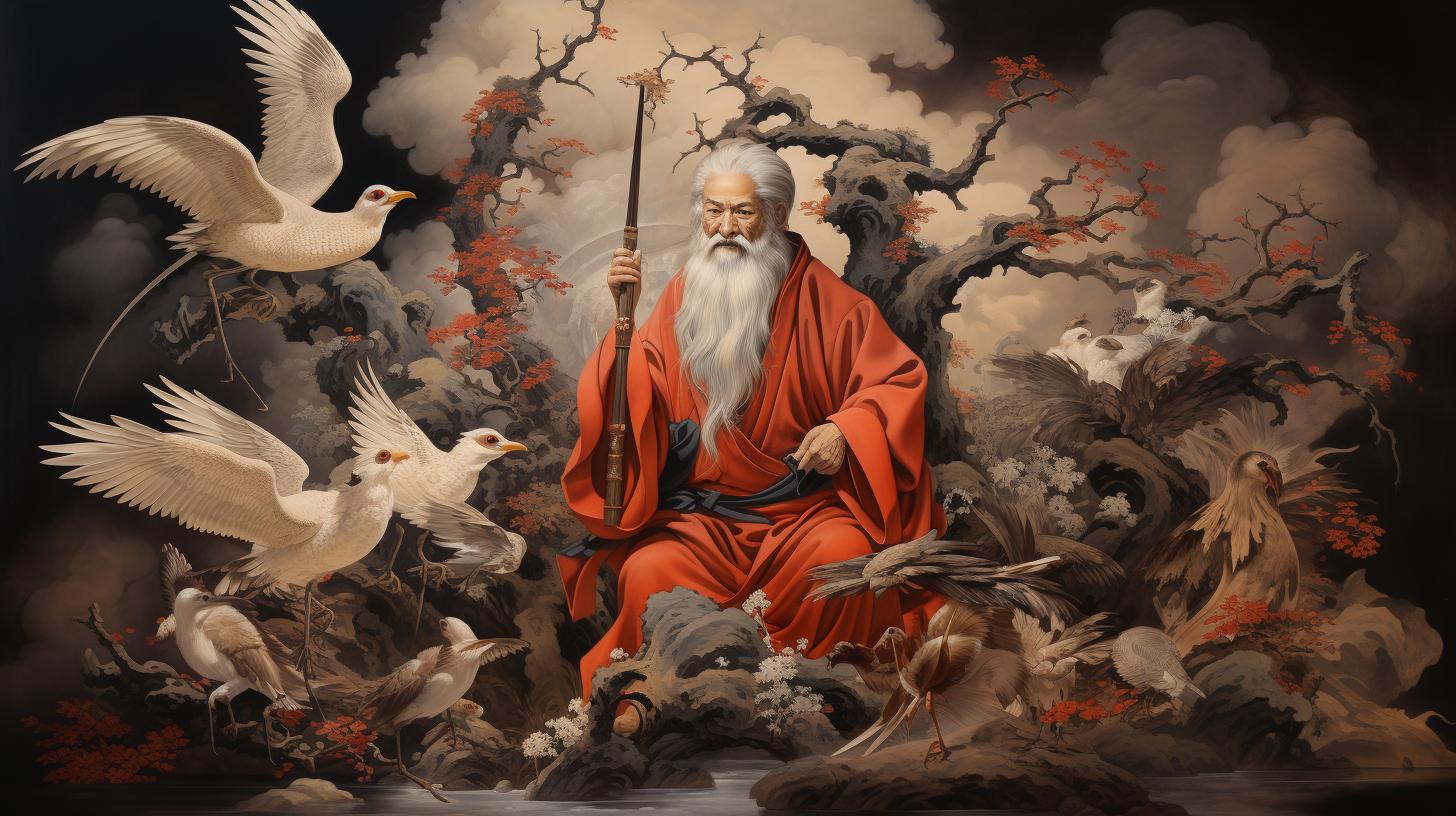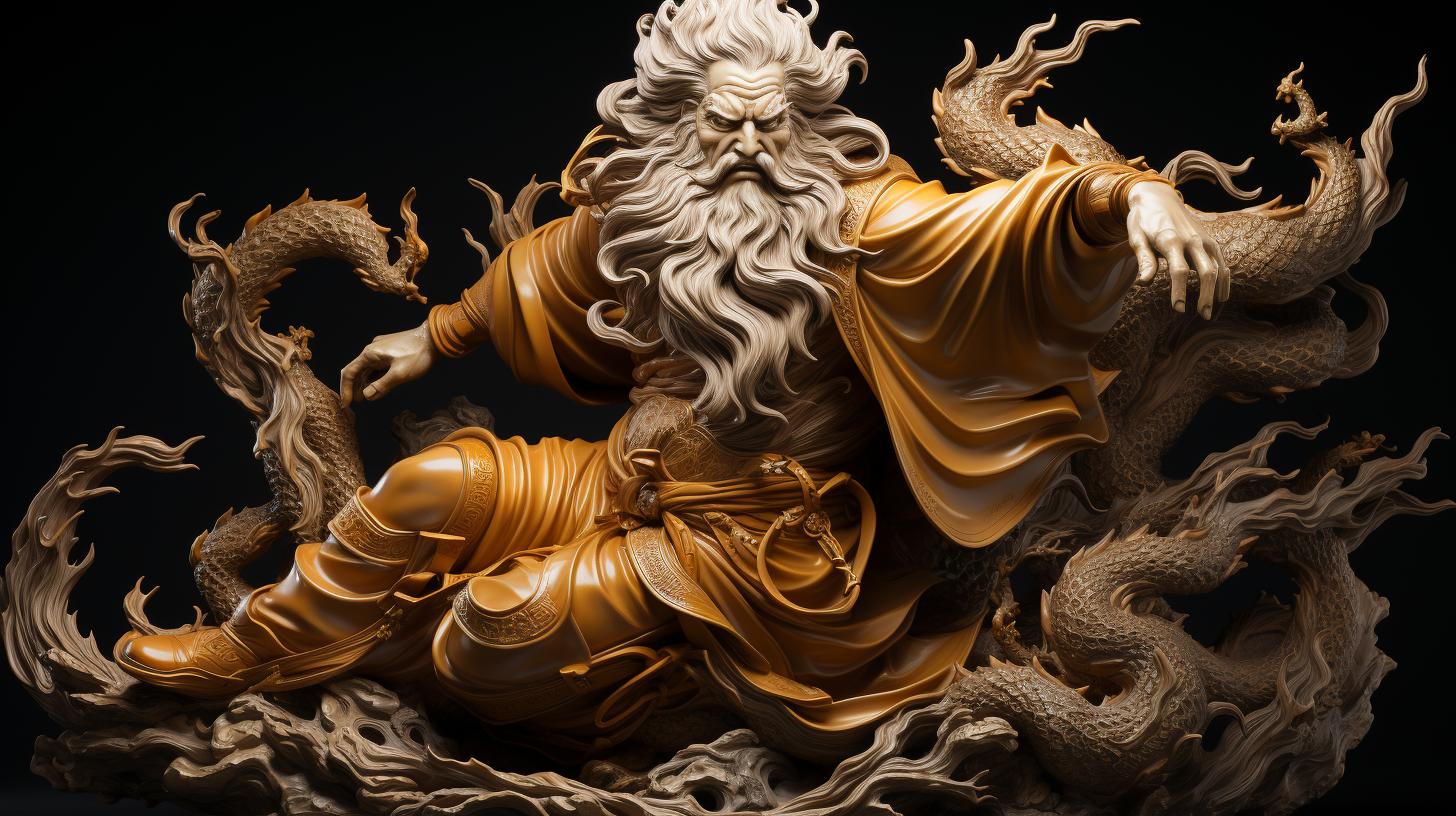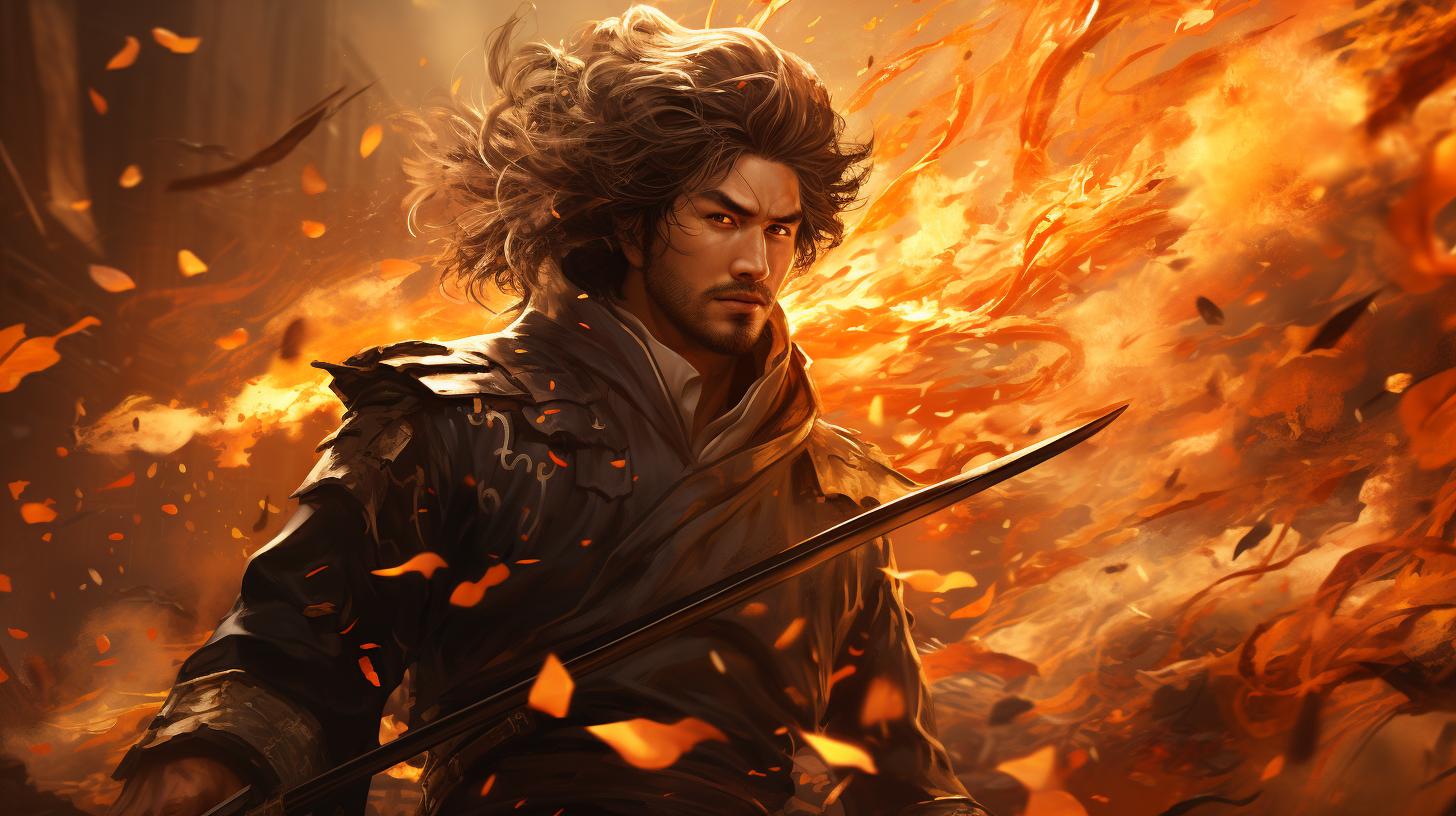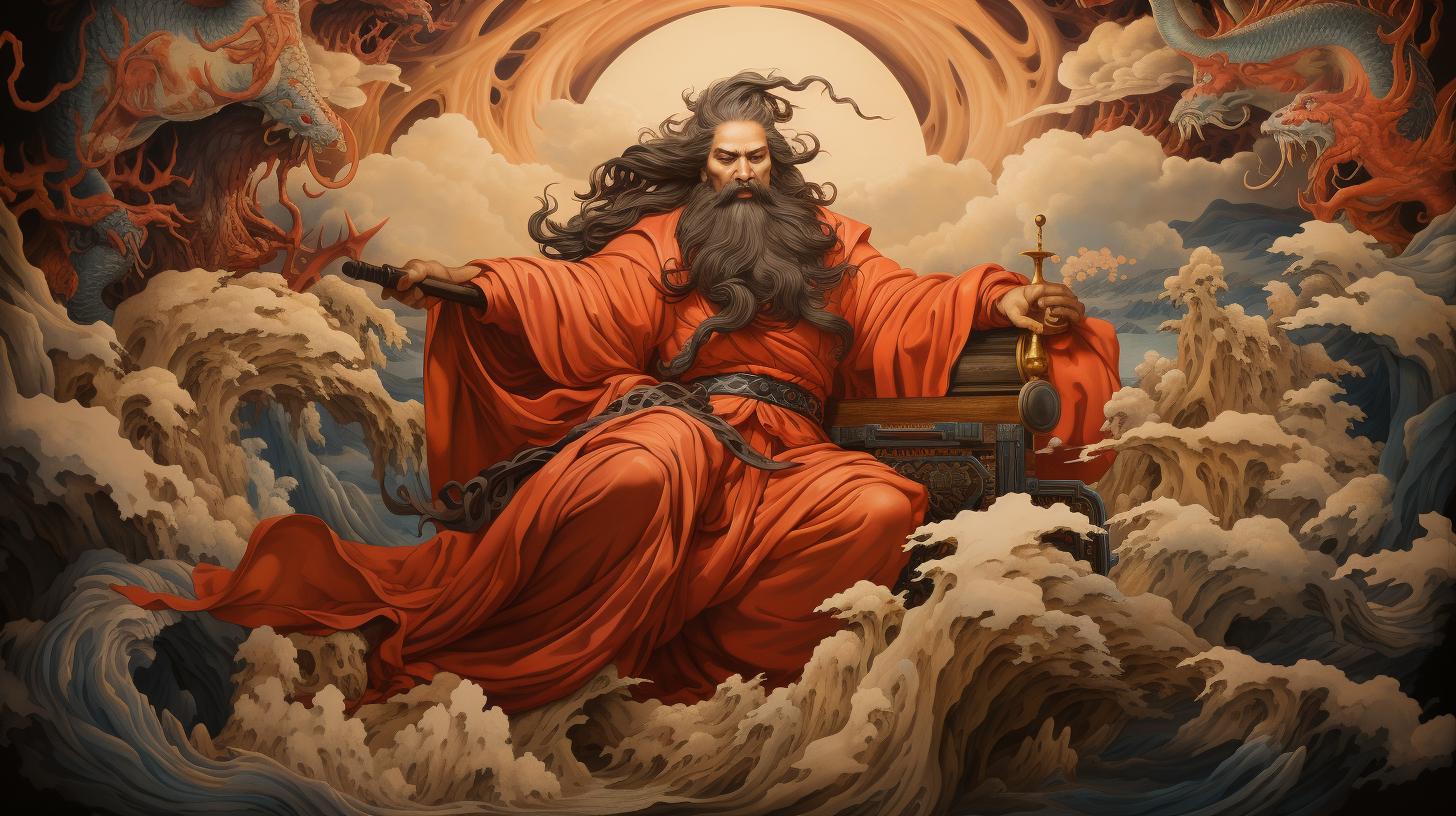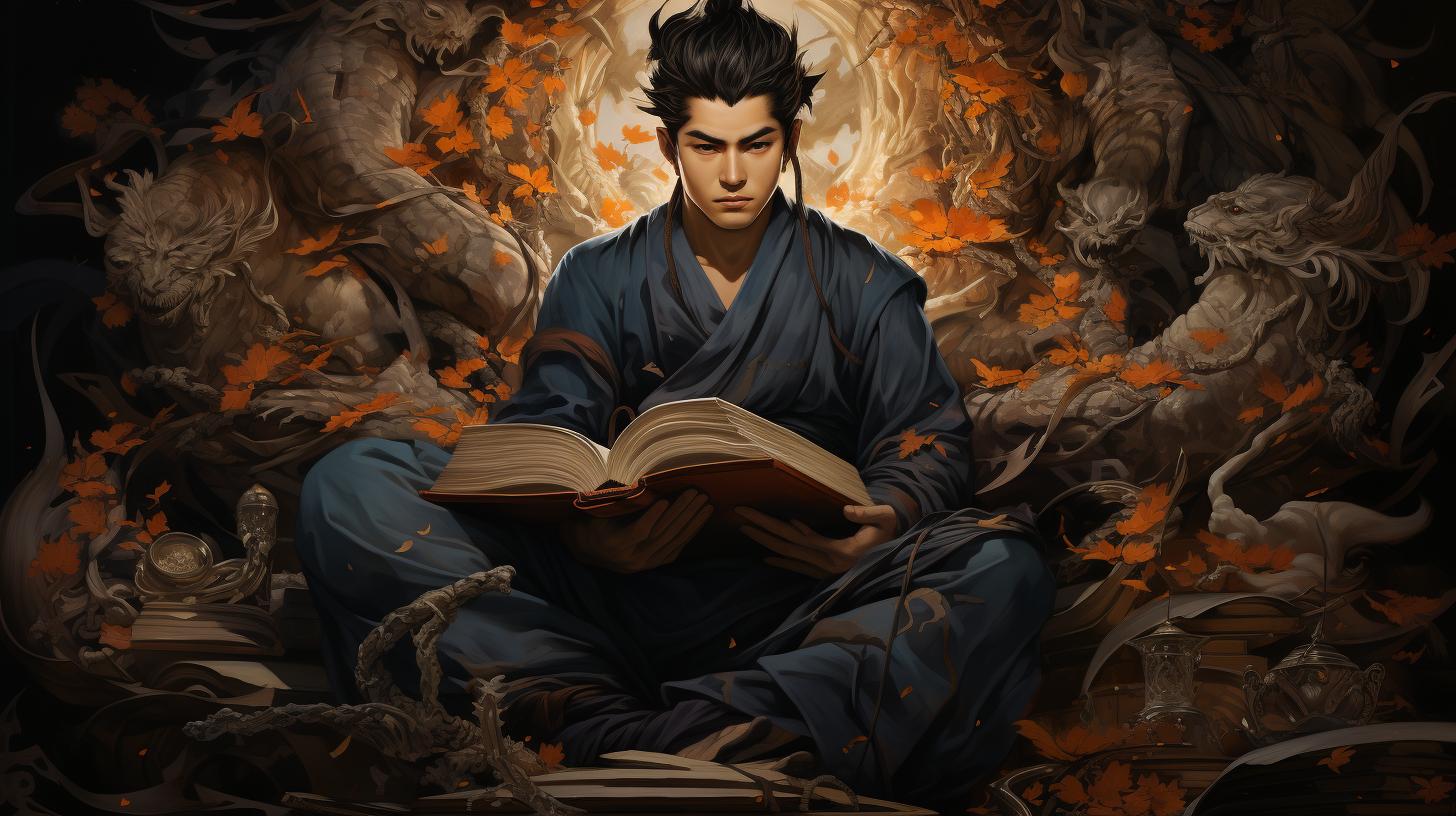Discover the Fascinating World of Japanese Gods of Nature
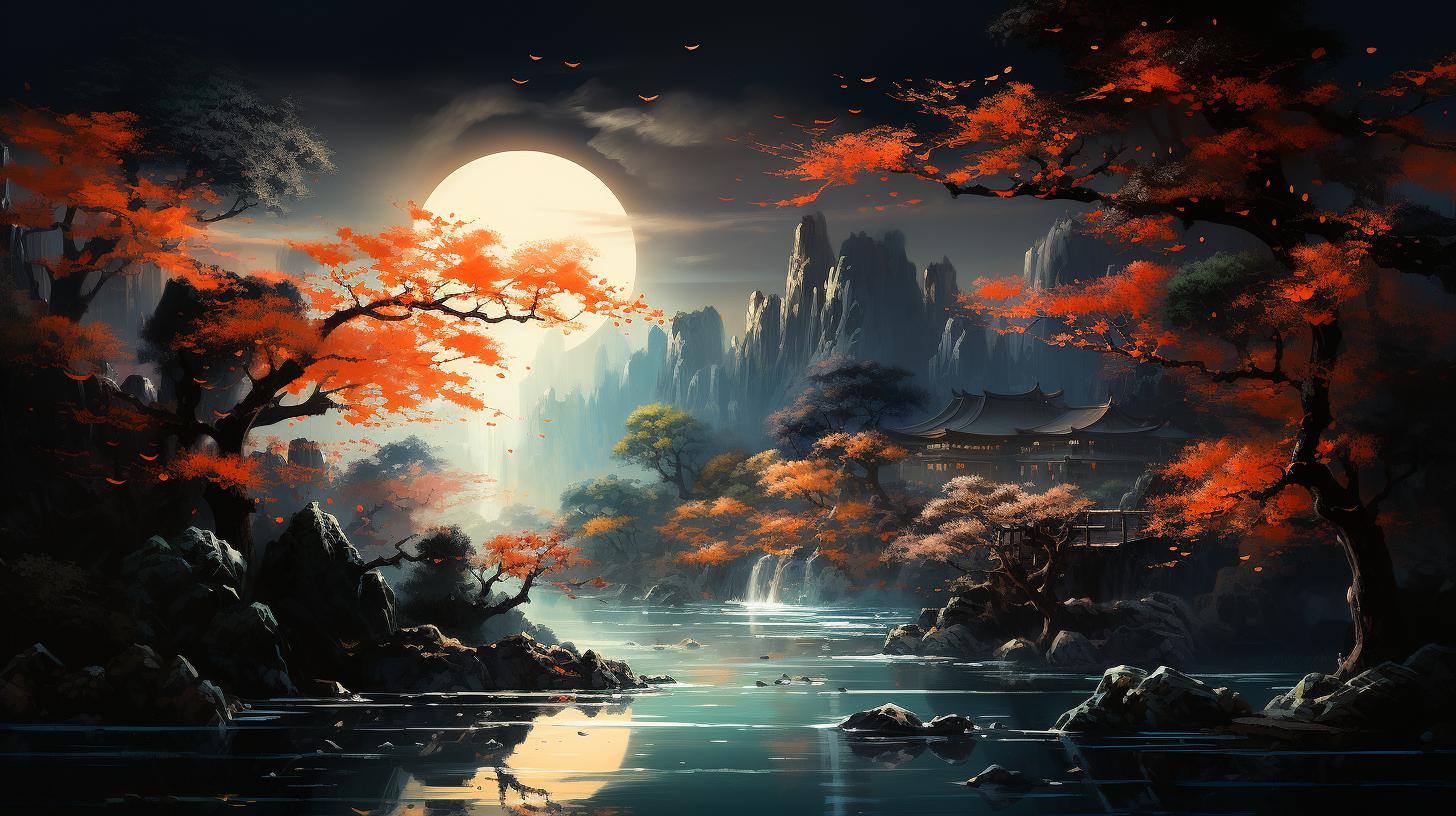
Japanese gods of nature, or Kami, are an integral part of Japanese mythology and culture. These deities can be found in nature, such as in mountains, rivers, and trees. Early Japanese mythology believed that Kami could bring either prosperity or disaster, depending on how they are treated.
The role of Kami in Japanese society has evolved over time, from protecting agriculture and hunting to influencing the imperial family. In this article, we will explore the origins, beliefs, and main Kami of Japanese gods of nature, as well as their significance in Shinto shrines and temples and their modern representation in Japanese society.
Understanding Japanese Gods of Nature
In Japanese mythology, nature plays a central role, and multiple deities and spirits control natural elements such as mountains, rivers, trees, and more. These deities are called Kami and are revered in Shintoism.
Early Japanese mythology believes that Kami can bring either prosperity or disaster depending on how they are treated. To understand the importance of Kami in Japanese society, it’s essential to comprehend the origin myths and explore the historical function of these deities.
- Kami Beliefs and Practices
Kami are not anthropomorphic and are instead seen as spirits who take on many forms and live all around us.
They may appear as animals, but they are not animals, and they may form inanimate objects. They were believed to have immense powers, even the ability to create life or destroy entire villages within a blink of an eye.
Because of their power, the Japanese people hold them in high regard and reverence them.
- The Significance of Nature in Japanese Religion
The Japanese people have a strong attachment to nature, and this is evident in their religion.
Nature represents a form of power that drives their faith, and it’s prevalent in every aspect of their lives. From their religion and art to their daily lives, the Japanese people show their love for the natural world.
Given their reverence for nature, it’s easy to see why Kami play such an important role in their mythology and culture.
In short, Kami are an essential aspect of Japanese culture, and they continue to shape their society in different ways, from protecting agriculture and hunting to influencing the imperial family. The belief in these spirits and the forces of nature that they control remind the Japanese of the power that lies within nature and their dependence on it.
Understanding these deities and their significance is crucial for anyone who wants to fully appreciate Japanese society, culture, and belief systems.
The Origins and Beliefs Surrounding Japanese Kami
Japanese mythology is filled with numerous deities and spirits that control nature and watch over Japan. One of the most important aspects of this mythology is the belief in Kami, the deities reportedly residing in natural elements.
The origins and beliefs surrounding these Kami are deeply ingrained in Japanese culture and history.
Creation Myth of Izanami and Izanagi
According to ancient Japanese mythology, the Kami came into being when two divine beings, Izanami and Izanagi, mated to create the Japanese archipelago and the first land. After creating the islands of Japan, Izanami and Izanagi went on to give birth to numerous other Kami.
These divine beings were seen as extremely powerful, and their creation myth played a vital role in the religious beliefs of Ancient Japan.
The Role of Kami in Japanese Culture Throughout History
Initially, the role of Kami in Japanese culture was related to the protection of agriculture and hunting. As time passed, their roles expanded into protecting against disease and influencing Japan’s imperial family.
The study of Kami has evolved so much that it’s now possible to distinguish between various types, such as creation, celestial, and earthly. The earlier belief in Kami being responsible for good fortune or destruction, depending on how they were treated, remains a significant part of contemporary Japanese beliefs.
The Japanese value the Kami highly, with various shrines dedicated to many of them. Kami are believed to provide health, wealth, and happiness, and people visit shrines to pray for blessings, whether asking for a prosperous harvest or good grades in school.
In conclusion, the mythology and history of Japanese Kami run deep, with stories dating back centuries. The creation myth of Izanami and Izanagi is a vital aspect of this mythology, and the roles of Kami in Japanese culture have greatly evolved over time.
Despite these changes, they remain an essential part of Japanese culture, with people venerating and respecting them in shrines and temples throughout the country.
The Main Japanese Kami
Japanese mythology is rich in deities, and the Kamis are revered in Shintoism as the gods of nature, representing various elements such as wind, thunder, mountains, and agriculture. In this section, we will delve into the fascinating world of the main Japanese Kami, their origins, and their significance in Japanese culture and society.
Amaterasu, the Sun Goddess
Amaterasu is the most important and widely known Kami, considered to be the goddess of the sun and the ruler of the heavens. Her importance in Japanese mythology goes back to the creation myth of Izanami and Izanagi and the story of the first emperor being her descendant.
Her shrine, Ise Grand Shrine, located in Mie Prefecture, is among the holiest Shinto sites and is visited by millions of pilgrims every year.
Inari, the Kami of Agriculture and Foxes
Inari is the Kami of agriculture and is often referred to as the patron of farmers and the god of rice. Her shrines are often adorned with fox statues, believed to be her messengers.
Fushimi Inari Taisha, located in Kyoto, is one of the most famous Inari shrines and attracts numerous visitors with its endless torii gates and the beautiful natural scenery surrounding it.
Hachiman, the Deity of War and Protection
Hachiman is the Kami of war and protection, often depicted riding a white deer and carrying a bow, arrows, and a sword. He was adopted by the samurai as their patron, and many shrines were erected in his honor throughout Japan.
One of the most famous Hachiman shrines is Tsurugaoka Hachimangu in Kamakura, a picturesque city south of Tokyo.
Kaminari and Fujin, the Kami of Thunder and Wind
Kaminari and Fujin are two of the most important Kami in Shinto, symbolizing thunder and wind, respectively. Kaminari is often portrayed carrying a drum, while Fujin is depicted holding a bag of wind.
The two Kami are believed to have the power to change the weather and are worshipped in various shrines across Japan.
Kasuga, the Female Deity of Fertility and Rebirth
Kasuga is one of the few female Kami and is worshipped for her role as the deity of fertility and rebirth. Her shrine, Kasuga Taisha, located in Nara, is famous for its beautiful architecture and is a UNESCO World Heritage Site.
The shrine is dedicated to Kasuga and her messenger animal, the deer, which are allowed to roam free throughout the grounds.
Kono-hana-sakuya-hime, the Goddess of Mount Fuji
Kono-hana-sakuya-hime is the Kami of Mount Fuji, the highest mountain in Japan, and is worshipped for her role as the goddess of fire and volcanoes. She is believed to have the power to avert disasters caused by volcanic eruptions and is worshiped in various shrines located at the base of Mount Fuji.
Tenjin, the Kami of Scholarship and Literature
Tenjin is the Kami of scholarship, literature, and calligraphy. He was originally a scholar himself and was later deified for his wisdom and knowledge. Many Tenjin shrines are located near schools, universities, and libraries, and students often pray to him for success in their studies.
The most famous Tenjin shrine is Tenmangu in Kyoto, a beautiful shrine surrounded by lush gardens.
Conclusion
The world of Japanese Kami is vast and fascinating, with each deity having its unique story, role, and importance in Japanese culture and society. In this section, we have explored the main Japanese Kami, their origins, and their significance in Shintoism and everyday life.
By learning about these deities, we can gain a deeper understanding of Japanese mythology and its connection to the natural world.
Kami in Shinto Shrines and Temples
Shinto shrines and temples are sacred places where people can pay their respects to the Kami. Visitors follow certain etiquette before entering the sacred space, such as bowing twice, clapping their hands twice, and then bowing again to show their respect.
Once inside, visitors may make an offering or prayer to the appropriate Kami for their needs.
The Significance of Entering the Sacred Space
Entering the sacred space of a Shinto shrine or temple is seen as a way of connecting with the Kami. People believe that Kami are peaceful and harmonious beings, so the sacred space is meant to be a calming and serene environment.
Visitors are encouraged to take their time in the sacred space and appreciate the natural beauty surrounding them.
Fushimi Inari Taisha, Shrine of Inari
Fushimi Inari Taisha is located in Kyoto and is dedicated to Inari, the Kami of agriculture and foxes. It is known for its thousands of torii gates, which form a tunnel leading up a mountain.
People visit the shrine to ask for good fortune and success in their endeavors. Visitors may also make an offering to the stone foxes guarding the gates of the shrine, as it is believed they are messengers of Inari.
Ise Grand Shrine, Home of Amaterasu
Ise Grand Shrine is located in Mie and is dedicated to Amaterasu, the sun goddess and one of the most important Kami in Japanese mythology. The shrine has two main buildings, Naiku and Geku, and visitors are not allowed to enter the buildings, but may observe them from a distance.
The shrine is said to be the most sacred in Japan, and people come to pay their respects to Amaterasu and ask for her blessings.
Itsukushima Shrine, Dedicated to the Sea and Moon Deity
The Itsukushima Shrine is located on the island of Miyajima and is dedicated to the sea and moon deity. The shrine is famous for its torii gate that appears to be floating on the water at high tide.
Visitors are encouraged to take a boat ride around the gate to fully appreciate its beauty. The Itsukushima Shrine is known for its breathtaking views of the ocean, and visitors often come to take in the peaceful and serene atmosphere.
Kami in Shinto Shrines and Temples:
- Shinto shrines and temples are sacred places where people can pay their respects to the Kami.
- Etiquette when entering the sacred space includes bowing twice, clapping twice, and bowing again.
- Fushimi Inari Taisha in Kyoto is dedicated to Inari, the Kami of agriculture and foxes, and is known for its thousands of torii gates leading up a mountain.
- Ise Grand Shrine in Mie is dedicated to Amaterasu, the sun goddess and one of the most important Kami in Japanese mythology, and is said to be the most sacred shrine in Japan.
- The Itsukushima Shrine on the island of Miyajima is dedicated to the sea and moon deity and is famous for its torii gate that appears to be floating on the water at high tide.
The Integration of Shinto and Buddhism in Japan
The Integration of Shinto and Buddhism in Japan
Shinto and Buddhism are the two major religions in Japan.
While Shintoism is an indigenous religion, Buddhism was introduced to Japan in the 6th century AD, from the Asian mainland. Buddhism first reached the island of Kyushu and gradually spread throughout Japan over the centuries.
Buddhism and Shintoism have coexisted in Japan for centuries, and they have had an ongoing influence on each other.
During the Nara period (710-794 AD), the earliest period of recorded Japanese history, Buddhism played a vital role in shaping Japanese culture. During this period, many Buddhist temples and statues were built, and Buddhist monks played important roles in various aspects of Japanese society.
Meanwhile, Shintoism continued to be practiced in its traditional form, without any doctrinal organization or hierarchy.
The Heian period (794-1185 AD) saw the development of Shinto-Buddhist syncretism, in which the two religions began to merge. Buddhist temples and Shinto shrines were built side by side, and Shinto kami were identified with Buddhist deities.
- The integration process can be seen in the following examples:
- The Buddhist concept of the afterlife was incorporated into Shinto beliefs, and the practice of ancestor worship became more widespread.
- Buddhist statues and symbols, such as pagodas, were incorporated into Shinto shrines.
- Shinto Kami came to be regarded as manifestations of the Buddha’s spiritual power.
The syncretism between Shinto and Buddhism continued to evolve throughout Japanese history.
In the Edo period (1603-1868), the two religions took on more distinct roles. Shintoism was associated with the emperor and the imperial family, while Buddhism was associated with the samurai class.
However, even in the modern era, the two religions continue to coexist and influence each other.
The Modern Representation of Kami in Japanese Society
In modern-day Japan, the representation of Kami is still present in various aspects of society. Despite the country’s rapid modernization, the Shinto religion and its beliefs have managed to withstand the test of time, and many Japanese citizens continue to place great value on their relationship with the Kami.
- Kami in Popular Culture
Kami have a significant presence in Japanese popular culture, with many anime and manga series featuring deities as their main characters.
Japanese video games also often feature Kami as powerful beings that can control elements like fire or water. It is not uncommon for Japanese individuals to have a strong attachment to a specific Kami, and this attachment often influences their hobbies and interests.
- Kami in Festivals and Celebrations
Kami are often celebrated in Japan through festivals dedicated to specific deities. These festivals can last for several days and typically involve parades, special rituals, and the preparation of traditional foods as offerings to the Kami.
The Japanese greatly value these sacred festivities, and many travel from all over the country to attend them.
- Kami in Modern-Day Religion
Shintoism remains a popular religion in Japan, and many of its followers practice their beliefs through visiting shrines and paying their respects to the Kami.
Many Shinto shrines still conduct traditional ceremonies and rituals led by Shinto priests. However, Kami have also been integrated into modern-day religions such as Buddhism, where they often play a prominent role.
- Kami in Tourism
Many tourists come to Japan to learn about the country’s rich cultural heritage, and Kami often play a significant role in this experience.
Visitors to Japan can tour various Shinto shrines and temples dedicated to different Kami and learn about their role in Japanese society. The country’s natural landmarks such as Mount Fuji and its surrounding forests are also believed to be the homes of various Kami, which has led to an increase in pilgrimage and eco-tourism activities.
In conclusion, the representation of Kami in modern-day Japanese society is a testament to their continued importance in Japanese culture and beliefs. From their role in pop culture to their significance in festivals, religion, and tourism, it is clear that Kami are still very much a part of Japanese life today.
…

